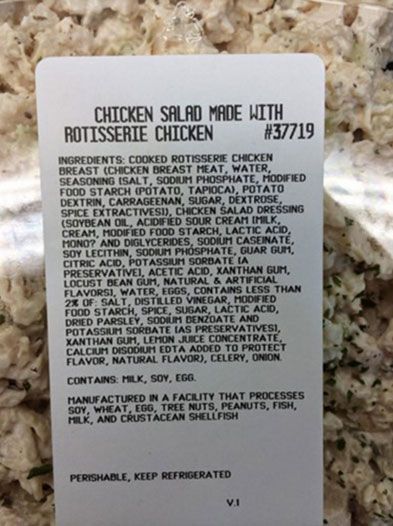Costco Chicken Salad Linked to E. Coli Outbreak in 7 States

An outbreak of E. coli bacteria tied to chicken salad sold at Costco has sickened 19 people in seven states, according to the Centers for Disease Control and Prevention.
Most of the E. coli-related illnesses have occurred in Western states — including Utah, Colorado, Washington and California — and there also have been several cases of E. coli-related illness in Missouri and Virginia.
The patients are infected with a strain of E. coli called O157:H7, which produces a harmful toxin called Shiga toxin. Five people have been hospitalized, and two of those people have developed a type of kidney failure called hemolytic uremic syndrome, which can be caused by the Shiga toxin.
Researchers at the CDC made the link between the illnesses and the chicken salad after 14 out of the 16 people who the CDC interviewed said they had purchased or ate rotisserie chicken salad from Costco in the week before they got sick. The illnesses started between Oct. 6 and Nov. 3. [Top 7 Germs in Food That Make You Sick]
On Nov. 20, Costco removed all of the rotisserie chicken salad from its stores, and stopped producing the product. Health officials have not yet identified an ingredient in the salad that may have been contaminated with E. coli, and the investigation into the outbreak is ongoing, the CDC said.
People who bought rotisserie chicken salad from Costco before Nov. 20 should throw it away, the CDC said.
Another strain of toxin-producing E. coli, called E. coli O26, was responsible for the recent outbreak at Chipotle Mexican Grill restaurants across the country, which sickened 45 people in six states. Health officials have also not determined which food or ingredient was responsible for that outbreak.
Sign up for the Live Science daily newsletter now
Get the world’s most fascinating discoveries delivered straight to your inbox.
Follow Rachael Rettner @RachaelRettner. FollowLive Science @livescience, Facebook& Google+. Original article on Live Science.

Rachael is a Live Science contributor, and was a former channel editor and senior writer for Live Science between 2010 and 2022. She has a master's degree in journalism from New York University's Science, Health and Environmental Reporting Program. She also holds a B.S. in molecular biology and an M.S. in biology from the University of California, San Diego. Her work has appeared in Scienceline, The Washington Post and Scientific American.











